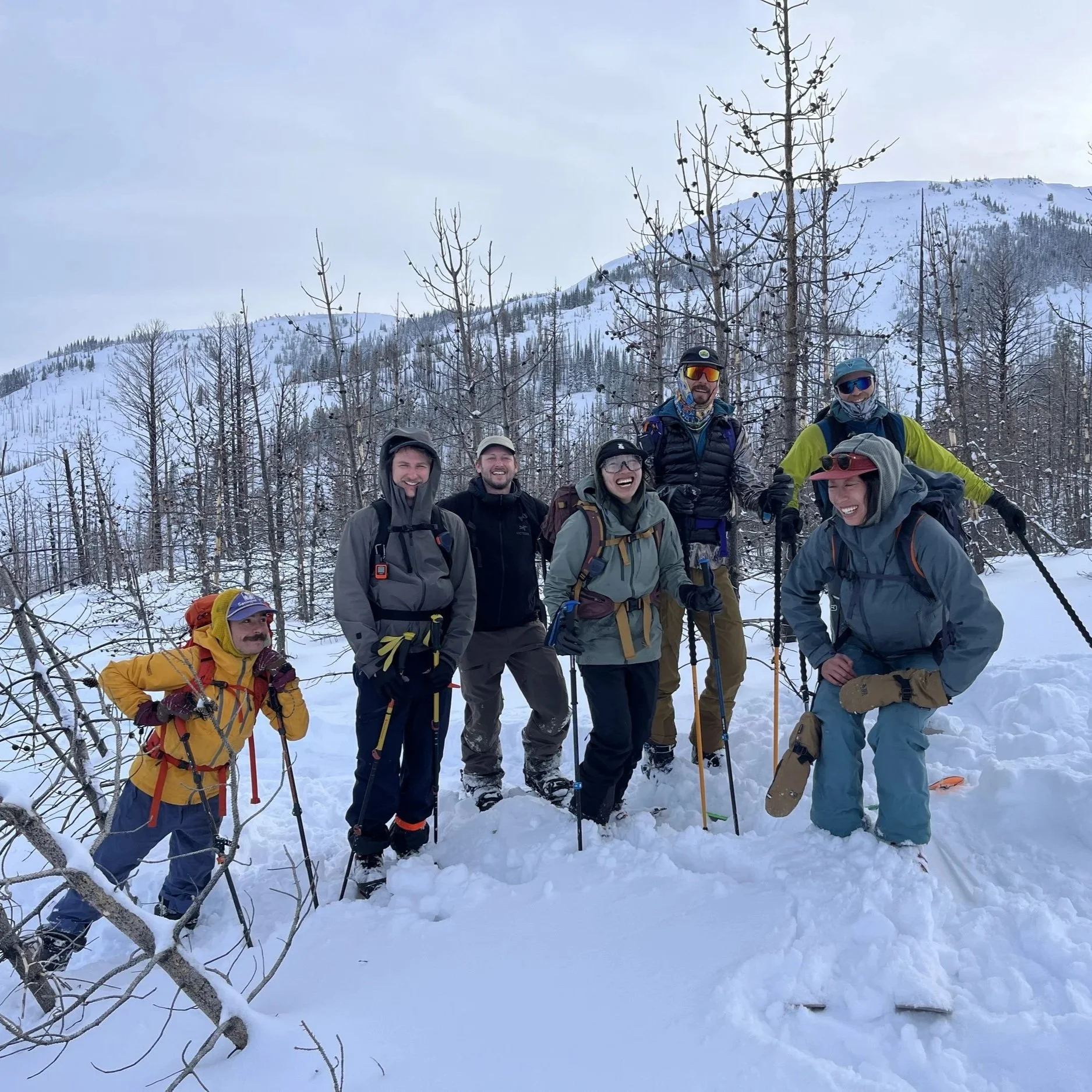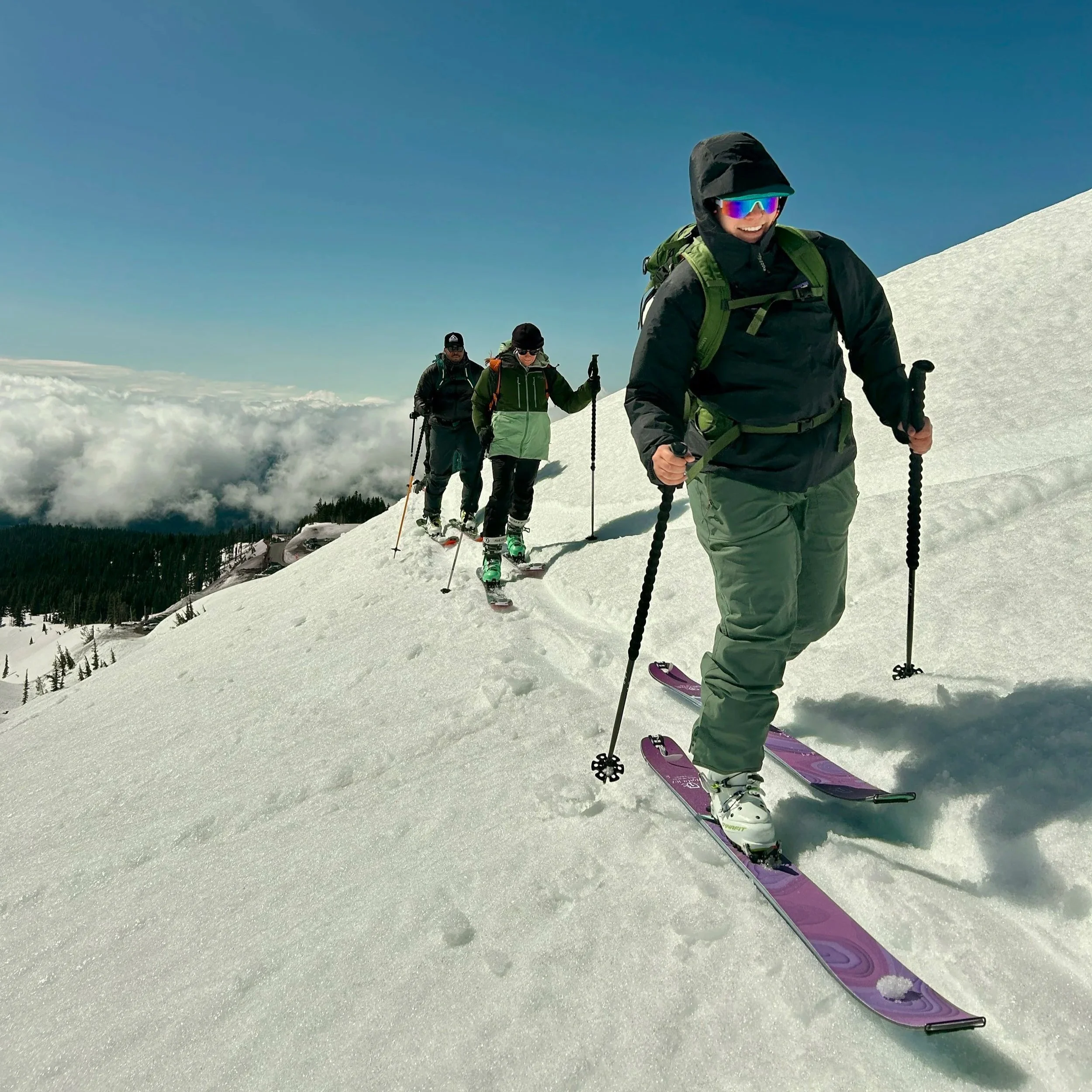 Image 1 of 1
Image 1 of 1


Mt. Baker Summit Ski Descent
Mt. Baker – Coleman-Deming Ski Descent
Program Overview
Rising to 10,781 feet, Mt. Baker’s provides an incredible ski mountaineering venue. The Coleman-Deming is the complete package with a scenic approach, a basecamp at the toe of the glacier, a flowing glacier climb, and long ski descent from the summit.
In July and August, summer conditions typically bring firm, supportable snow for the climb and smooth corn skiing for the descent.
3-Day Itinerary
Day 1 – Approach and Glacier Travel Review
We’ll meet in Glacier, Washington for a gear check and trip briefing before driving to the Heliotrope Ridge Trailhead. From there, we’ll skin or hike up through old-growth forest and alpine meadows, reaching Hogsback Camp at around 6,000 feet by early afternoon, review glacier-travel systems, and settle in with incredible sunset over the Puget Sound.
Day 2 – Summit and Ski Descent
We’ll begin our climb early in the morning, ascending the Coleman Glacier and traversing onto the Deming Glacier and up the Roman Headwall. The climb gains about 4,000 vertical feet from camp to the summit. After enjoying sweeping views of the North Cascades, we’ll transition to ski mode and descend the Roman Headwall before rejoining the Coleman Glacier for a continuous run back toward camp.
Day 3 – Return to Trailhead
After breakfast, we’ll pack up camp and make our way back to the trailhead.
Skills & Requirements
Excellent fitness for a multi-day trip with a 4,000–5,000 foot climb and ski descent.
Confident skiing on steep, variable snow (comparable to double-black diamond terrain inbounds).
Prior experience with ski touring or splitboarding.
Familiarity with ice axe, crampons, and basic glacier travel is recommended.
Gear & Preparation
Participants will need a full ski-mountaineering kit: touring skis or splitboard with skins, boots, avalanche beacon, shovel, probe, helmet, ice axe, crampons, harness, glacier-travel gear (ropes and group equipment provided), and camping equipment suitable for alpine conditions.
Season & Conditions
The best time to ski Mt. Baker via the Coleman-Deming Route is May through August, when the glacier is well-filled, weather patterns stabilize, and snow quality offers firm morning climbs and excellent corn skiing during descent. All trips are private and customized to your group’s pace, goals, and experience.
Safety & Guide Support
Our guides continuously assess snow, weather, and glacier conditions to ensure a safe and rewarding experience. If weather or snowpack make a summit descent unsafe, we’ll select an alternate route or objective that provides equally valuable ski-mountaineering experience.
Mt. Baker – Coleman-Deming Ski Descent
Program Overview
Rising to 10,781 feet, Mt. Baker’s provides an incredible ski mountaineering venue. The Coleman-Deming is the complete package with a scenic approach, a basecamp at the toe of the glacier, a flowing glacier climb, and long ski descent from the summit.
In July and August, summer conditions typically bring firm, supportable snow for the climb and smooth corn skiing for the descent.
3-Day Itinerary
Day 1 – Approach and Glacier Travel Review
We’ll meet in Glacier, Washington for a gear check and trip briefing before driving to the Heliotrope Ridge Trailhead. From there, we’ll skin or hike up through old-growth forest and alpine meadows, reaching Hogsback Camp at around 6,000 feet by early afternoon, review glacier-travel systems, and settle in with incredible sunset over the Puget Sound.
Day 2 – Summit and Ski Descent
We’ll begin our climb early in the morning, ascending the Coleman Glacier and traversing onto the Deming Glacier and up the Roman Headwall. The climb gains about 4,000 vertical feet from camp to the summit. After enjoying sweeping views of the North Cascades, we’ll transition to ski mode and descend the Roman Headwall before rejoining the Coleman Glacier for a continuous run back toward camp.
Day 3 – Return to Trailhead
After breakfast, we’ll pack up camp and make our way back to the trailhead.
Skills & Requirements
Excellent fitness for a multi-day trip with a 4,000–5,000 foot climb and ski descent.
Confident skiing on steep, variable snow (comparable to double-black diamond terrain inbounds).
Prior experience with ski touring or splitboarding.
Familiarity with ice axe, crampons, and basic glacier travel is recommended.
Gear & Preparation
Participants will need a full ski-mountaineering kit: touring skis or splitboard with skins, boots, avalanche beacon, shovel, probe, helmet, ice axe, crampons, harness, glacier-travel gear (ropes and group equipment provided), and camping equipment suitable for alpine conditions.
Season & Conditions
The best time to ski Mt. Baker via the Coleman-Deming Route is May through August, when the glacier is well-filled, weather patterns stabilize, and snow quality offers firm morning climbs and excellent corn skiing during descent. All trips are private and customized to your group’s pace, goals, and experience.
Safety & Guide Support
Our guides continuously assess snow, weather, and glacier conditions to ensure a safe and rewarding experience. If weather or snowpack make a summit descent unsafe, we’ll select an alternate route or objective that provides equally valuable ski-mountaineering experience.








